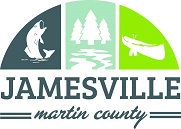Featuring the North Carolina Herring Festival
For over half a century, these festivities celebrated Spring by bringing together local folk and visitors from afar for a taste of local traditions. Though the activities surrounding the festival have changed somewhat throughout the years, its rich heritage and and spirit are still alive and well. Year after year on Easter weekend in Jamesville, you are guaranteed good food, good fellowship, good music and good fun!
At the River’s Edge Restaurant, you’ll be delighted by great food. On top of “the hill” you can find local civic clubs and churches serving up all sorts of other tasty dishes and treats (in addition to herring) including hot dogs, cheesesteaks, shrimp, oysters and many mouth watering homemade desserts. Local art and craft vendors line the streets all weekend to show off their talents and provide face painting for kids of all ages.
Various bands are on stage to provide your musical entertainment and there are lots of fun rides for children on Main Street. Easter Sunday marks the last day of the festival as events wind down. Traditionally, there is an Easter sunrise service at the Jamesville Town Cemetery. Sunday evening, when the sun goes down, fireworks by the local Fire & Rescue is always a fitting finale to a unique Easter weekend to remember.

History of Jamesville:
The second oldest town in Martin County, Jamesville, was incorporated in 1785 as James Town, with its name changing in 1797 to Jamestown and finally, on Feb. 10, 1855, to Jamesville.
Situated directly on the Roanoke River, Jamesville residents depended on the shipment of agricultural and forest products, supplying local farmers with merchandise, and taking advantage of the early springtime fishing season that was centered there.
Jamesville thrived prior to the Civil War with the formation of a large sawmill operation headed by Dennis Simmons. The construction of the Astoria Mill about a mile upriver gave the county its largest antebellum industry.
During the Civil War, Jamesville’s placement between Union headquarters at Plymouth, downriver to the east, and Williamston, Hamilton and Fort Branch, upriver to the west, put the town in constant peril. The town’s unenviable position placed it, as one local historian described, in “no man’s land” between opposing Union and Confederate interests. The once-prosperous town was virtually destroyed during the course of the war. As a result, the only surviving antebellum residence in town is the ca. 1810 Burras House on West Main Street.
